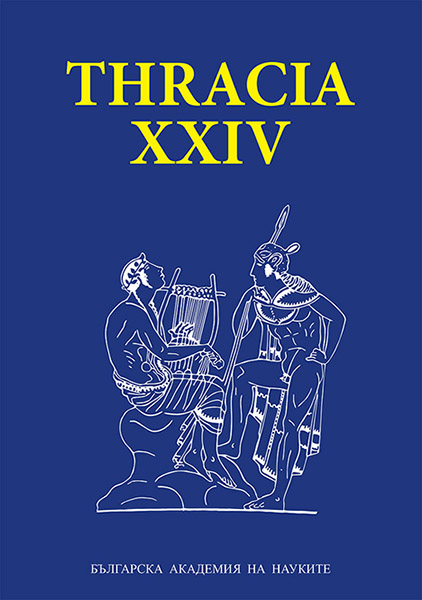Траки и сол: достоверните преки данни на епиграфиката
Thracians and Salt: True Direct Evidence of Epigraphy
Author(s): Peter A. DimitrovSubject(s): History, Cultural history, Economic history, Local History / Microhistory, Social history, Ancient World
Published by: Институт за балканистика с Център по тракология - Българска академия на науките
Keywords: Salt; Thracians; Salenos; Saldo-; Indo-European culture
Summary/Abstract: Checking for interesting examples in areas where compact groups of Indo-Europeans had settled, we become aware of the presence of the morpheme /sal-/ along with or without the specific sonant /n/, which develops into a/e-no- at the end of the component. Here are some examples: Seilenos, Silenos, Silanos (see Detschew 443) basically as allomorphs of Salenos, which is very often to be seen in the texts of the Greek inscriptions found in Bulgaria (see Mihailov IGBulg). As a matter of fact, these are to be seen in vol. 5, 5877, vol. 4. 2246 in connection with Salo- from Sale .The same in v. 5. 5901–5905 and 5909, all found in “God Salenos Sanctuary” dated to 230 AD. Besides, Mihailov thinks that the epithets Solenos as in 4. 2305 and 5. 5610, are all connected with Sellenos, the latter being another good example. They all mean the same as per the IE root /sal-/, Old Bulgarian солъ. Here are more cases, e.g. Sallos, 4. 2348 not found in Detschew; Saltobussenos, 2. 526 found in Northwestern Bulgaria, etc. More examples are to be found in Anatolia, Northern Greece, Continental Greece and Macedonia. The main point that is of interest to us is to show both the meaning and its development. The name of the present-day city of Salonika (Solun in Bulgarian) was in those ancient times Salonike. This is a clear trace along the Struma (Strymon) River starting from the Vitosha Mountain down to the Aegean coast. In Northern Bulgaria, following the limes of the Danube River, as well as beyond in present-day Romania, the stem / sal-/ and its allomorph /sel-/ are well attested. It is clear that the numerous cases of /sa-/se-/ become another evidence pointing to the discreet structure of the Palaeo-Balkan vocalism, especially that of the Thracian language. In conclusion, the case of the salt is getting to be a cultural sign phenomenon in the Indo-European antiquity.
Journal: Thracia
- Issue Year: 2019
- Issue No: 24
- Page Range: 262-271
- Page Count: 10
- Language: English, Greek, Ancient (to 1453), Bulgarian
- Content File-PDF

